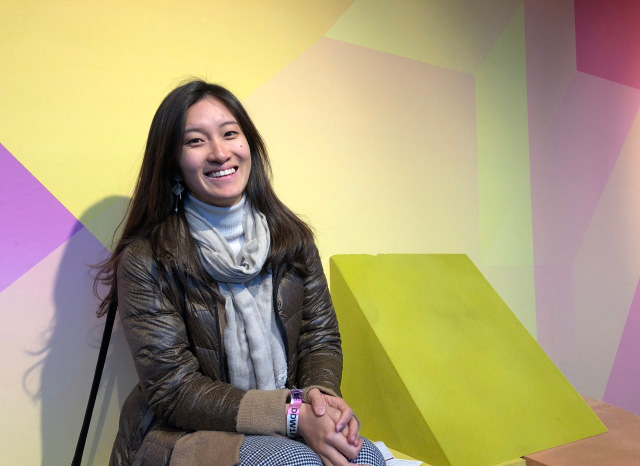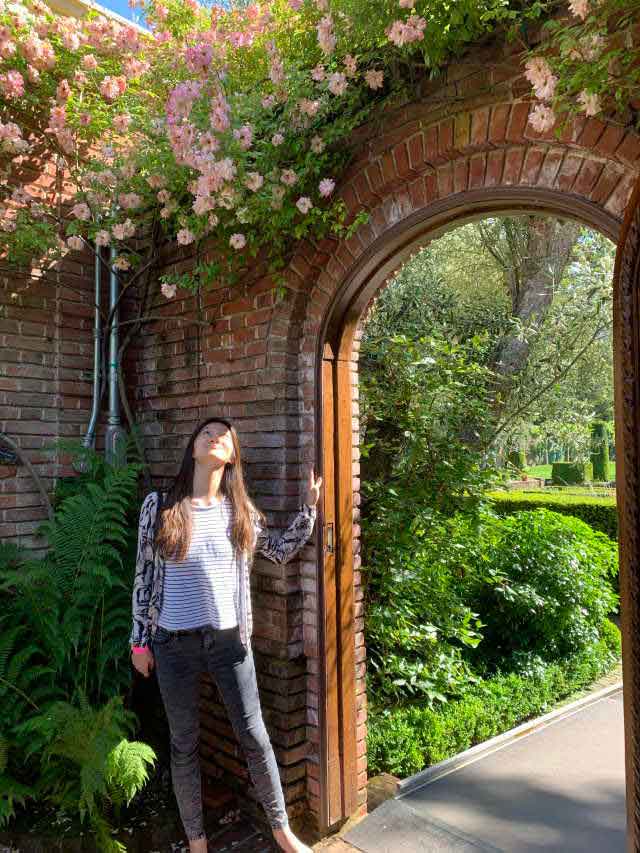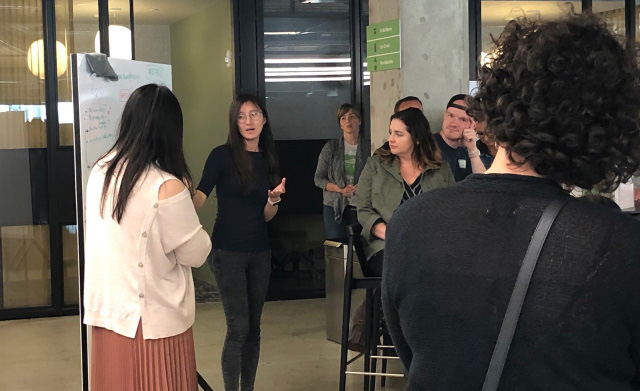2022-January-28
Did you know? You can share this story using the social media icons on the upper left. Use the hashtag #WeAreCisco. You can also rate or comment on the story below.
A Landscape Architect’s Take on Web Design
BY KRYSTAL CHENG AND CRYSTAL SHAN
4 MINUTE READ · 6 MINUTE LISTEN

When Crystal Shan was a student at Beijing Forestry University, she studied landscape architecture and intended to pursue a career in it after graduation.
But there was a small problem.
“I was never good at remembering the names of plants!” she laughs. “They were my primary design medium, yet I still had a hard time using them in my outdoor designs.”
Crystal saw this as a sign that it was time for a change. So she started to look elsewhere until she finally found a home in user experience (UX) design at Cisco. How she got here is another funny story.
“I actually applied to Cisco because I remember we used a Webex Board in our classroom years ago. Because I was so impressed by its features and the magical experience it created, I was inspired to apply to Cisco Webex to do more creative work.”
Q: When did you realize you needed to try something new?
A: In landscape architecture, only the designer or project funders have a say in the design process. End users are rarely heard. Because of that, their goals are usually misunderstood.
This process frustrated me a lot because my design principle is the opposite: The end users come first.
Q: How did you discover UX?
A: In my third year of university, my roommates and I got the opportunity to help my school digitize its news. So I taught myself user-centered design.
I was finally able to interview my users, hear what they thought, and reimagine what we could do differently to improve the experience. From that moment, I knew I wanted to continue on this design path.

Q: How does it compare to landscape architecture?
A: Although one is designing a physical space and the other is developing a digital one, the challenge is the same: To create a delightful experience for users to get from point A to point B.
Q: Do you ever find yourself using your landscape architecture skills at work?
A: Definitely. In landscape architecture, I learned how to map out problems holistically to see the larger picture of a project. This has undoubtedly given me a unique perspective when working with my Cisco customers and developing solutions for them.
It’s how I’m currently leading a project to reimagine the end-to-end calling purchase experience involving three different product areas. I can understand why each step is essential and see how it all seamlessly comes together in a way that optimizes the overall experience.
Q: Do any design projects you work on come from customer feedback?
A: Absolutely! We continuously gather customer feedback through user research or from customer support.
We’re addressing one major customer issue right now around bringing new payment methods — like PayPal — into the purchase flow. As of now, we only accept credit cards. That was a significant deal-breaker for a lot of our customers.

Q: What’s an accomplishment at Cisco you’re proud of?
A: I was voted the most "customer-obsessed" employee by my cross-functional teams last year. It may seem like a small award, but it was a big deal to me.
I’ve stayed up late so many nights, poring over customer feedback to find that nugget that will guide us to make impactful changes to our products.
They were things like figuring out how nearly half of our customers had problems continuing their purchases due to missing informational items. Or how customers are interested in purchasing devices as a bundle to the software.
Insights like these have not only helped me do a better job as a designer but also directly impacted our product roadmaps for both the short and long term.
Q: What’s your advice for those who want to change their career paths?
A: Keep iterating! When I was learning about product design, I was inspired by how most popular modern apps were built using an iterative design approach with a strong focus on end users.
The process consists of three steps:
- Understand your target users’ needs and pain points
- Brainstorm ideas with limitless possibilities
- Allow the users to try out these ideas
If you find yourself unhappy where you are, use the iterative design approach by imagining yourself as the end user.
Keep iterating until you find the life you dream of.
Related Links
Connect everything. Innovate everywhere. Benefit everyone.
Share your thoughts!
Log in to rate and commentShare your thoughts on the story here!